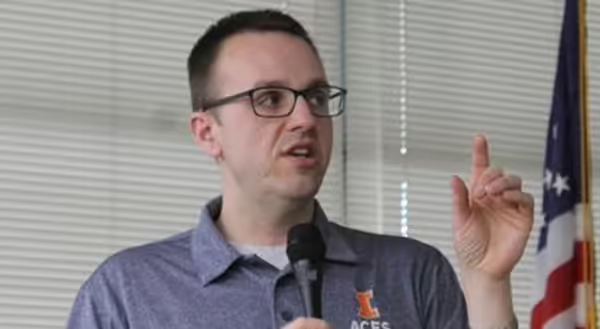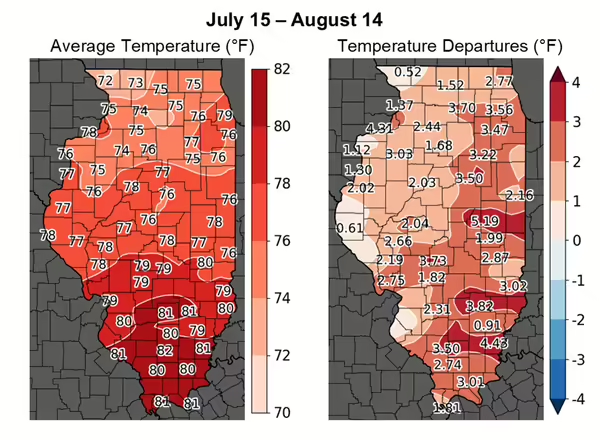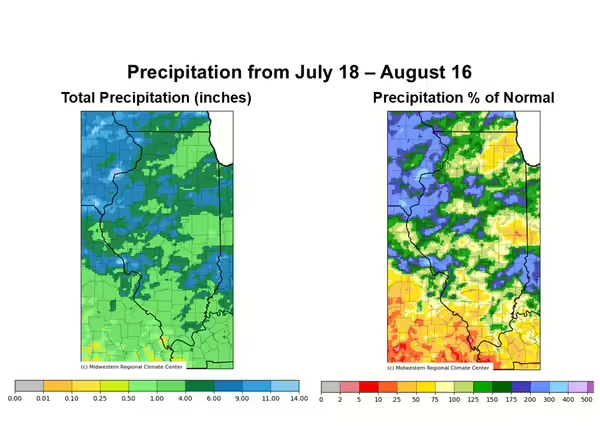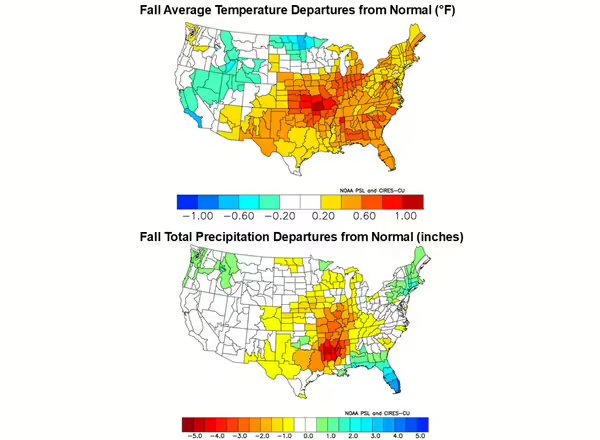
Weather update from Trent Ford, Illinois State Climatologist. Most of Illinois hits its climatologically hottest time of the year between the third week of July and the first week of August. This year, though, mother nature didn’t get that message, and the last part of July and much of August so far have been much warmer than normal. Average temperatures since mid-July have ranged from the low 70s in far northwest Illinois to the mid-80s in far southern Illinois, between 1 and 5 degrees above normal.
Nighttime temperatures have been particularly extreme this summer, thanks to persistent humidity. In fact, Springfield has experienced an extremely high dewpoint temperature (> 70°F) in more than half of all hours since June 1st, and Carbondale has reached the same mark in over 80% of all hours over the time. High humidity has been a major factor in the expansive crop disease presence this growing season, with most mornings experiencing heavy dew.

The Upper Midwest has been very wet since mid-July, and much of northern and central Illinois have benefited from repeat rounds of storms and, sometimes, heavy rainfall. Meanwhile, much of southern Illinois has been somewhat to very dry since mid-July, which is quite the contrast to the exceptionally wet spring and start to summer in the southern quarter of the state. Precipitation totals since mid-July have ranged from less than half an inch in Alexander County to nearly 12 inches around the Quad Cities and far northwest Illinois (Figure 2).
Temperature and precipitation outlooks for September and climatological fall (September – November) will be released on August 21st. The latest status for the El Niño-Southern Oscillation (ENSO) report that we are in a neutral pattern, meaning neither El Niño nor La Niña. However, the latest ENSO outlooks are showing better chances for potential La Niña this fall and winter. Fall seasons (September – November) in La Niña patterns over the past 30 years have shown a tendency for warmer and drier than normal weather throughout the lower Mississippi Valley, including in southern and central Illinois (Figure 3). It’s important to note that we are not yet in La Niña, and every La Niña year is somewhat different.

